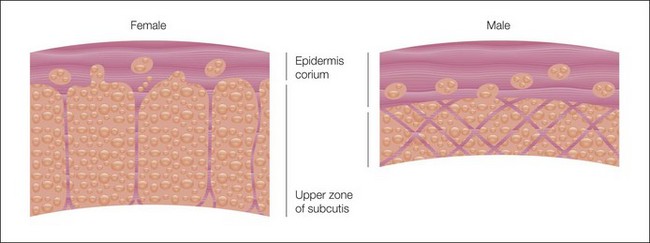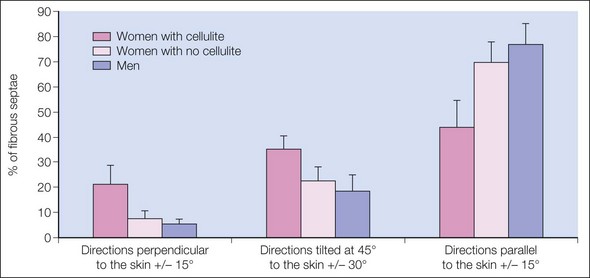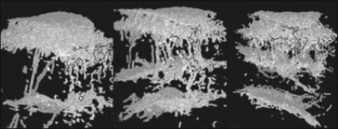8 Non-surgical body contouring
Summary and Key Features
• Given the epidemic rise of obesity, and the obsession with losing weight and improving our appearance, the treatment of fat and cellulite is a common cosmetic issue
• Fat and cellulite are distinct entities. Cellulite is best considered a hormonally based structural phenomenon of adipocytes and fibrous septae, whereas excess fat is an overabundance of normal adipocytes
• The treatment options for excess fat and cellulite are different and a treatment that improves one may have no discernible impact on the other
• Non-invasive body contouring is a rapidly expanding cosmetic field, with many new technologies recently developed and promising new technologies expected in the near future
• Topical agents, such as retinoids and methylxanthines, have theoretical benefits on the appearance of fat and cellulite, though objective clinical improvements are limited
• Injectable therapies, including mesotherapy and injection lipolysis, are also options for patients
• Physical massage of the affected areas may improve the appearance of fat and cellulite by modulating blood and lymphatic flow. In clinical studies, modest improvements have been observed
• Radiofrequency (RF) devices utilize alternating current to generate ionic flow and localized heat in adipocytes, moderately improving the appearance of fat and cellulite
• High-intensity focused ultrasound (HIFU) can also specifically target adipocytes, thereby improving the appearance and thickness of the fat layer. Recently, a HIFU device was cleared by the FDA for non-invasive waist circumference reduction
• Several laser devices utilizing near-infrared wavelengths, in combination with physical manipulation, have been developed to improve the appearance of fat and cellulite by stimulating dermal collagen formation. Lasers with wavelengths that are selectively absorbed by the adipocytes themselves are currently being developed and studied for potential efficacy
• Cryolipolysis is a novel therapy by which controlled cold exposure (heat extraction) is utilized to selectively damage adipocytes, cause apoptosis, and gradually improve the appearance and thickness of the fat layer over several months following the treatment
• There are few head-to-head studies comparing these different technologies. The ideal treatment option for your patient is best determined by discussing the options with the patient, their ultimate treatment goals, and reaching an informed decision together
Fat versus cellulite
Ultrasound and magnetic resonance imaging (MRI) studies have demonstrated the significant structural alterations between male adipose tissue and female cellulite structure. In male adipose tissue, the fibrous septae of the adipose tissue are arranged in an overlapping criss-cross pattern. This theoretically provides greater strength to the overall scaffolding of the adipose tissue and prevents herniation of fat cells. Cellulite, on the other hand, has fibrous septae that are arranged parallel to each other, and perpendicular to the skin surface (Fig. 8.1). This structure is weaker, and allows for the focal herniation of adipose tissue. It is this focal herniation that is thought to cause the classic undulating, lumpy, ‘cottage cheese’ appearance of cellulite. MRI has demonstrated that women with cellulite do in fact have fibrous septae that are oriented in parallel to each other, although these septae may actually be more similar to pillar-like columns (Figs 8.2 and 8.3). In addition to this structural difference, MRI, ultrasound, and biopsies have also demonstrated that women with cellulite typically have an undulating, lumpy interface between the adipose tissue and the dermis, known as papillae adiposae (Fig. 8.4). This interface also likely contributes to the appearance of cellulite.

Figure 8.1 Orientation of subcutaneous fibers extending from dermis to fascia in males and females.
Reprinted by permission of Blackwell from Nurnberger F, Muller G 1978 So-called cellulite: An invented disease. Journal of Dermatologic Surgery and Oncology 4:221.
Evaluation of fatty tissue and cellulite
Cellulite can similarly be assessed with various measurements and definitions. Typically, direct observation with side lighting is the simplest and most effective assessment. Based upon these observations, a relatively simple scoring system for the appearance of cellulite has been described (Table 8.1).
Table 8.1 Cellulite classification
| Grade I | No or minimal skin irregularity upon standing, pinch test, or muscle contraction |
| Grade II | No or minimal skin irregularity upon standing. Dimpling becomes apparent by pinching or muscle contraction |
| Grade III | Classic skin dimpling at rest with palpable, small subcutaneous nodularities |
| Grade IV | More severe puckering and nodularity |











